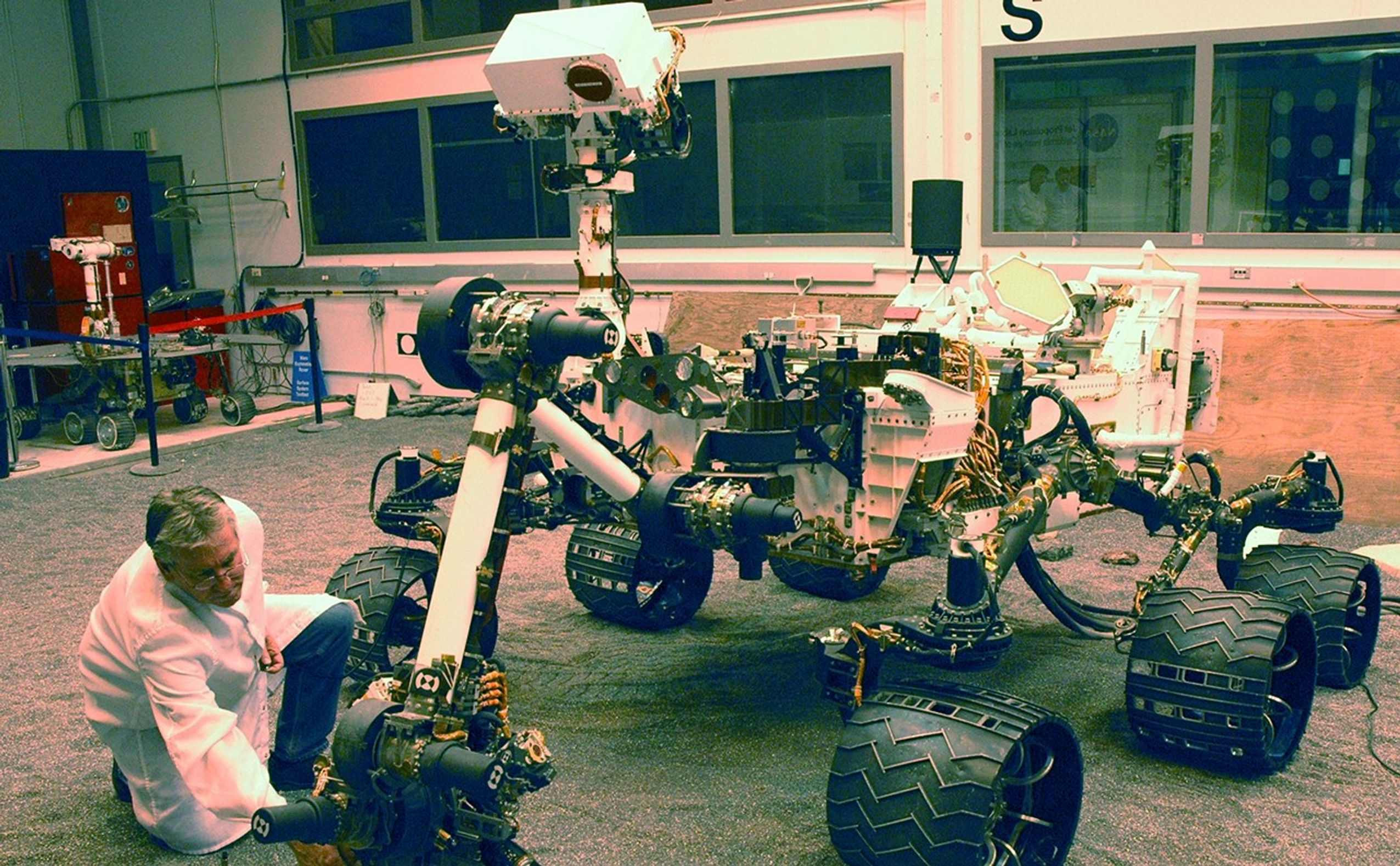Testing Precision of Movement of Curiosity’s Robotic Arm
| Credit | NASA/JPL-Caltech |
|---|---|
| Language |
|
A NASA Mars Science Laboratory test rover called the Vehicle System Test Bed, or VSTB, serves as the closest double for Curiosity in evaluations of the mission's hardware and software. This February 2012 scene inside the In Situ Instrument Laboratory at NASA's Jet Propulsion Laboratory, Pasadena, Calif., shows testing precision of movements of the rover's robotic arm in response to positioning commands. JPL's Gerald Clark is the test participant beside the turret of tools at the end of the arm.
The Mars Science Laboratory spacecraft was launched Nov. 26, 2011, for delivering Curiosity to a site inside Gale Crater on Aug. 6, 2012, Universal Time and EDT (Aug. 5, PDT). For about two years after landing, the rover will study whether that area of Mars has ever offered an environment favorable for microbial life. Curiosity's arm has the strength and precision to maneuver the 73-pound (33-kilogram) turret at the end of the arm accurately enough to deliver an asprin tablet into a thimble.
The Vehicle System Test Bed will continue to be used at JPL after Curiosity's landing for advance checking of commands under consideration for sending to its sibling on Mars.






























